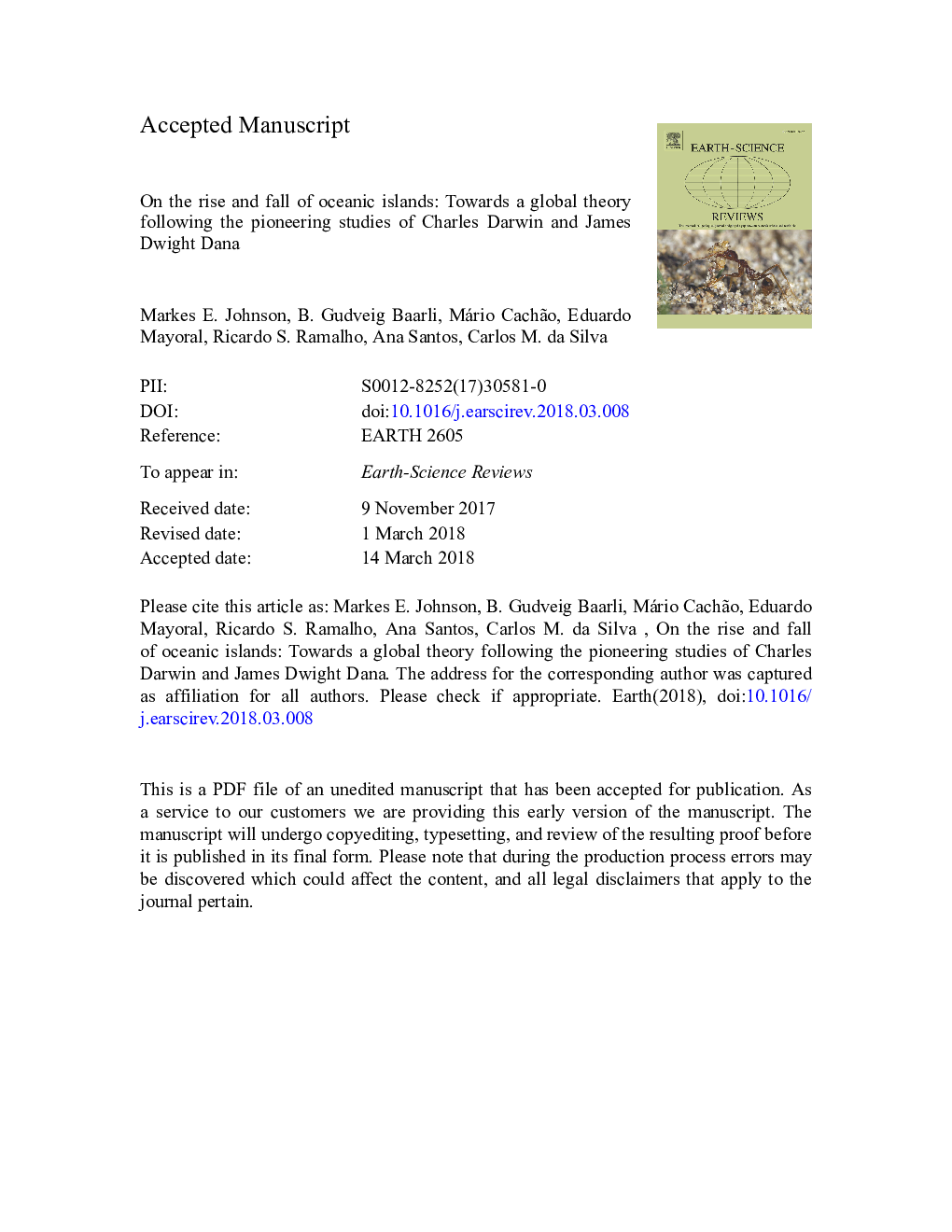| کد مقاله | کد نشریه | سال انتشار | مقاله انگلیسی | نسخه تمام متن |
|---|---|---|---|---|
| 8912950 | 1639922 | 2018 | 108 صفحه PDF | دانلود رایگان |
عنوان انگلیسی مقاله ISI
On the rise and fall of oceanic islands: Towards a global theory following the pioneering studies of Charles Darwin and James Dwight Dana
ترجمه فارسی عنوان
در حال افزایش و سقوط جزایر اقیانوسی: به سوی یک نظریه جهانی بر اساس مطالعات پیشگام چارلز داروین و جیمز دوایت دانا
دانلود مقاله + سفارش ترجمه
دانلود مقاله ISI انگلیسی
رایگان برای ایرانیان
کلمات کلیدی
جزایر اقیانوسی، رسوبات کربنات (رودولیت ها و مرجان ها)، ژئومورفولوژی ساحلی، عدم انطباق، صعود، فروپاشی،
موضوعات مرتبط
مهندسی و علوم پایه
علوم زمین و سیارات
زمین شناسی
چکیده انگلیسی
The careers of Charles Darwin (1809-1882) and James Dwight Dana (1813-1895) are intimately linked to circumnavigations of the globe with the British mapping expedition on the H.M.S. Beagle (1831-1836) under Captain Robert FitzRoy and the United States Exploring Expedition (1838-1842) under Lieutenant Charles Wilkes. The former expedition mainly surveyed coastal South America, but also visited many volcanic islands in the Atlantic, Pacific, and Indian oceans. The latter expedition followed a similar path through the Atlantic, but devoted more time to Pacific Ocean islands. Remembered more today for his visit to the Galapagos Islands and its subsequent impact on understanding the mechanisms of biological evolution, Darwin was motivated early on during his stopover in the Cape Verde Islands to compile studies on the geology of volcanic islands. Better known for his theory of atoll development from the subsidence of volcanic islands stimulated by his visit to the Keeling Islands and published in 1842, Darwin also wrote a related volume published in 1844 with an equally strong emphasis on island uplift. Dana was influenced by Darwin's theory of atoll development, and published his own independent observations on coral reefs and island subsidence in 1843, 1849, and 1853. The work of both geologists matured from primary observations using inductive logic during fieldwork (i.g. unconformable position of limestone on and between basalt flows as an indicator of paleo-sea level) to the advancement of broader theories regarding the behavior of the Earth's oceanic crust. Notably, Dana recognized age differences among islands in Pacific archipelagos and was strongly influenced by the orientations of those island groups. The classic Hawaiian model that features a linear string of progressively older and subsiding islands does not apply easily to many other island groups such as the Galapagos, Azores, Canary, and Cape Verde islands. Geologists and coastal geomorphologists increasingly find that the original observations on island uplift covered in Darwin's, 1844 treatment provide an alternative pathway to understanding the complexities of island histories in oceanic settings. Original work by Darwin and Dana also led to ongoing studies on the trans-oceanic migrations of marine organisms, such as barnacles, corals and non-attached coralline red algae represented by rhodoliths. This work gives added importance to oceanic islands as way stations in the dispersal of biotas over time.
ناشر
Database: Elsevier - ScienceDirect (ساینس دایرکت)
Journal: Earth-Science Reviews - Volume 180, May 2018, Pages 17-36
Journal: Earth-Science Reviews - Volume 180, May 2018, Pages 17-36
نویسندگان
Markes E. Johnson, B. Gudveig Baarli, Mário Cachão, Eduardo Mayoral, Ricardo S. Ramalho, Ana Santos, Carlos M. da Silva,
